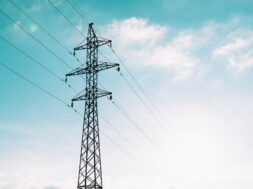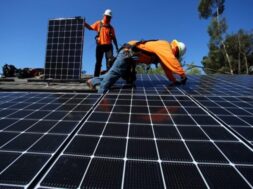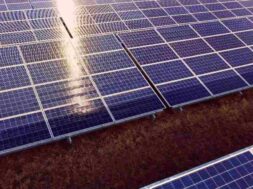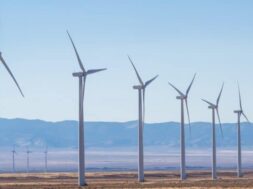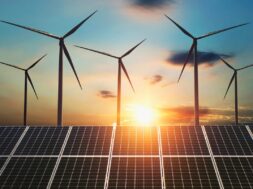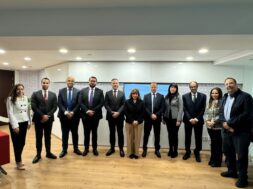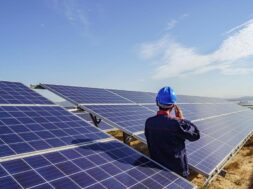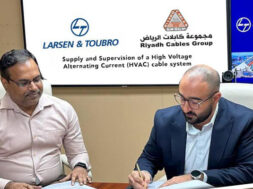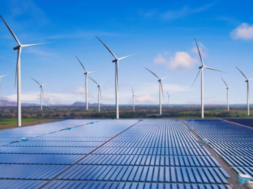
Efforts to harness wind and solar resources will stall without improved transmission infrastructure. Can Africa turn the corner before it is too late?
Solar panels and wind turbines are becoming an increasingly common sight across Africa, as the continent’s green energy revolution gathers pace. But to reap the benefits of an energy system in which renewable sources are dominant, investment is desperately needed in a type of infrastructure that can easily be forgotten – electricity transmission.
Investment in long-distance power lines is ramping up around the world, given that wind and solar facilities are often located far from power consumers. But Africa is lagging behind.
“The existing transmission infrastructure in Africa is inadequate and the power systems in most countries incur substantial losses,” says Francesco La Camera, director-general of the International Renewable Energy Agency. “Insufficient transmission capacity significantly hampers the ability of many African countries to tap into their abundant renewable energy resources and reach their true potential.”
This became painfully apparent in South Africa at the end of last year. The country is experiencing devastating blackouts. But in its latest bidding round for independent power producers, the government announced that it would contract just 860 MW in new renewable energy capacity – less than a fifth of what it had originally planned to procure.
The fiasco was the result of the grid – operated by Eskom, the troubled state-owned utility – becoming overloaded in parts of the country where wind and solar power is abundant.
“The most attractive sites with the lowest tariff potential are in fact not eligible for procurement due to the lack of grid availability,” laments Moritz Breickmann, investment director at African Infrastructure Investment Managers. Strengthening grid connections to the resource-rich Northern Cape province, as well as improving north-south transmission capacity in the country, must be key priorities, he says.
It is already clear that efforts to harness wind and solar resources will stall without improved transmission infrastructure. Can Africa turn the corner before it is too late?
Power struggle
Around 600m people in Africa lack access to electricity. Although “micro-grids” and “off-grid” solutions have a role to play in improving connections, there is no substitute for a well-functioning power grid that can provide reliable power to homes, businesses and industrial users. Put simply, such a grid can, for example, supply electricity to places where it is cloudy from solar sources in full sun elsewhere, or to windless places from turbines that have wind.
“Powering people’s homes with solar home systems is great and getting a little bit of first-time electricity is fantastic,” says Jennifer Baldwin, team lead for transmission and distribution at Power Africa, a US-government funded initiative to improve electricity access. “But it’s not going to power the industrial revolution that is needed for job creation and economic growth in sub-Saharan Africa.”
At least until recently, however, grid investment has tended to be a low priority across most African countries. Occasionally, new renewables projects have been left dormant because of a lack of transmission. The Lake Turkana wind farm in Kenya – the largest in Africa – was completed in July 2017. But the accompanying transmission line was delayed, and the turbines could not supply power to Kenya’s electricity grid until October 2018.
“Despite their crucial role in delivering power to homes and businesses, transmission and distribution networks in Africa have comparably received less attention from both public and private sector investors,” says Marcel Bruhwiler, infrastructure manager for Eastern and Southern Africa at the International Finance Corporation. He estimates that $4bn in financing per year is needed to expand and maintain the continent’s transmission network.
Private investment
A large part of the challenge is that in most African countries electricity transmission and distribution remain the responsibility of power utilities, almost all of which are mired in varying degrees of financial crisis. Few governments have been willing to encourage private sector investment in transmission.
“Transmission assets have historically been regarded as strategically sensitive,” says Chris Flavin, head of business development at Gridworks, a company developing a company developing on- and off-grid power infrastructure in Africa. There are also practical difficulties: since transmission lines function as part of a larger network, dividing roles and responsibilities between multiple players can be difficult, Flavin says.
Other emerging-market regions have, however, enjoyed considerable success in encouraging private sector investment into transmission. A 2017 World Bank report noted that Brazil had attracted almost $16bn in private sector investment in its transmission network over the previous 20 years. The report said that Brazil’s experience demonstrates that multiple transmission companies can co-exist within a single power network.
“What we’ve seen in other parts of the world is that there comes a point in a lot of markets in a resource constrained environment where it makes very good sense to use private sector capital for the transmission sector,” says Flavin.
There are some promising signs that attitudes towards private sector involvement are beginning to change in Africa. Alastair Herbertson, a director at the Emerging Africa Infrastructure Fund, which provides debt financing for infrastructure projects on the continent, says that some governments are considering different approaches to strengthening transmission networks.
“We are definitely seeing a lot more openness to the concept of private sector operators developing the grid,” he says. He notes that in some cases, contracts have been awarded to power producers on the condition that they upgrade transmission lines.
“Most countries are realising that, with rising interest rates and hard currency shortages, they need to look somewhere other than the fiscus to finance these investments,” says Herbertson.
Zambia is one of the few African countries with a history of private sector involvement in transmission. Transmission lines operated by the Copperbelt Energy Corporation, which was privatised in the 1990s, supply electricity to mines in the Copperbelt region. In the rest of Zambia, however, the state power utility ZESCO operates the transmission network.
Albert Halwampa, director-general of the Zambia Development Agency, says the country is preparing for a rapid increase in electricity generated from private solar projects. The Zambian government is introducing reforms that would enable investors to “create their own transmission lines directly to the consumers”, Halwampa tells us.
“Why should they depend on the transmission lines [owned] by ZESCO?” he asks. “We’re encouraging investment in generation, transmission, and we hope eventually, into marketing.”
Another country making major strides is Kenya. The government signed a deal in January 2022 with India’s state-owned Power Grid and Africa50, an infrastructure investment platform owned by the African Development Bank, to launch the first independent power transmission project in Africa. The project will result in the construction of two new power lines.
Kaniaru Wacieni, senior investment director for project finance at Africa50, says the new lines will improve the flow of electricity to western Kenya, where power is constrained, and “unlock potential renewable investments” in the north of the country. He predicts that the project will also “catalyse greater sustainability of the power sector through an unbundled transmission tariff, and provide a template for other projects”.
Crossing borders
To create a truly well-functioning power system in the age of renewables, transmission lines cannot stop at national boundaries. Cross-border transmission via grid interconnectors is vital to mitigating the problems caused by the fact that wind and solar are inherently intermittent. If power can be moved around the continent efficiently, a surplus of power in one country can help to mitigate a deficit in its neighbours.
Breickmann notes that in West Africa, for example, “hydropower resources are located in countries which border the Atlantic, while solar resources are primarily located in the Sahelian countries. An integrated transmission infrastructure would allow countries in the region to share the benefits of both hydro and solar energy sources.”
The trading of power between different countries is already well-established in parts of the continent. Africa is divided into several regional power pools, of which the Southern African Power Pool is the most developed.
The African Union intends to go further. In 2021, it unveiled plans for an African Single Electricity Market, which it aims to make fully operational by 2040.
“There are a lot of large-scale projects being looked at that involve more regional integration,” says Flavin. “Especially if you’re looking at the capacity of the continent to absorb renewables, that could make a lot of sense.”
In practice, some of the more ambitious schemes for long-distance transmission lines will be extremely difficult to deliver. South Africa signed a deal in 2013 to purchase power from the latest stage of the Inga Dam in the Democratic Republic of Congo, which lies 3,500 km north of Johannesburg. A decade later, construction on the megaproject is yet to begin.
“Long-distance transmission, particularly if you’re crossing borders, tends to take a very long time to develop,” says Flavin. “You’re dealing with a number of different governments with different fiscal positions, different legal and regulatory systems, different market design. These projects tend to take longer to design, finance and construct.”
While not every cross-border project will prove viable, there is no doubt that improved transmission links are needed if Africa’s immense potential for solar and wind power is to be realised. Pylons and power lines may be unglamourous, even ugly. But they will prove to be the backbone of the energy transition on the continent, enabling electricity access to become a reality for the hundreds of millions of Africans who lack power today.
